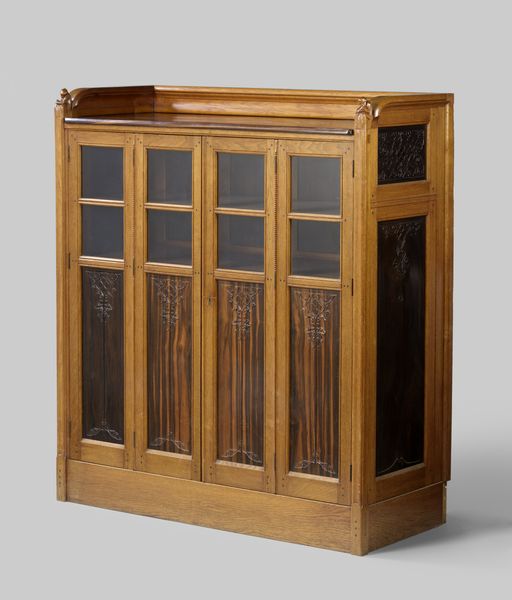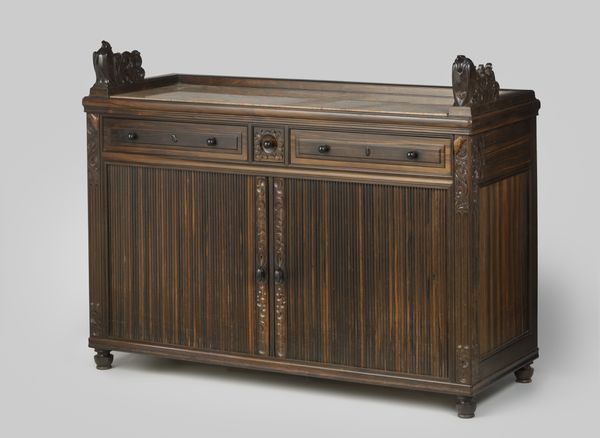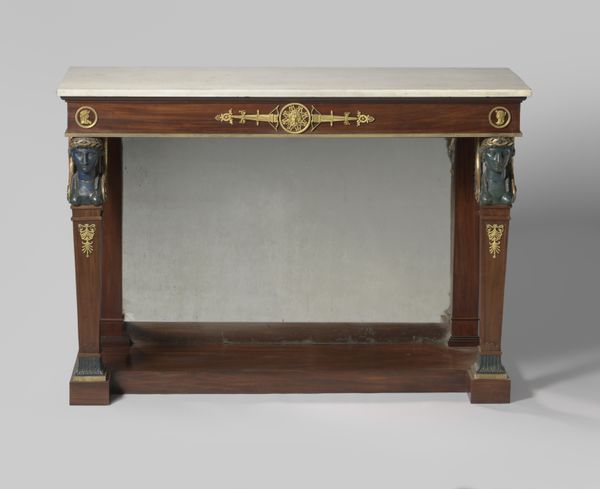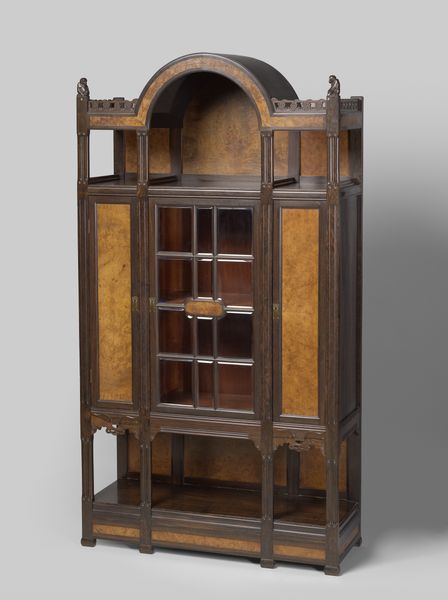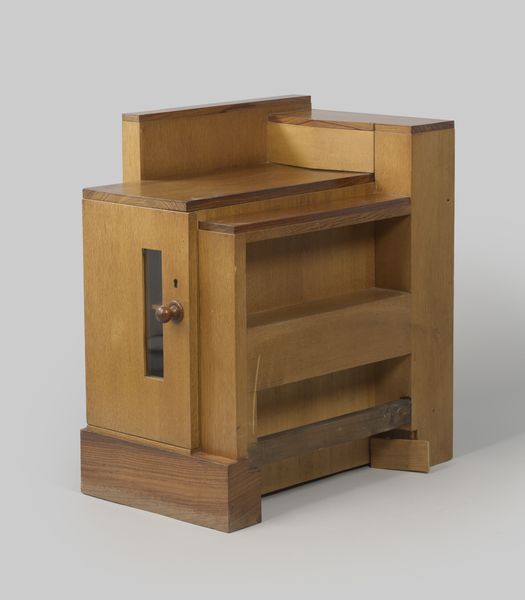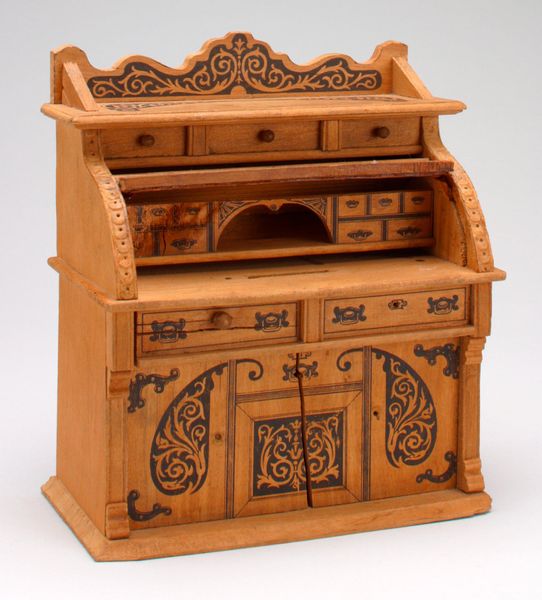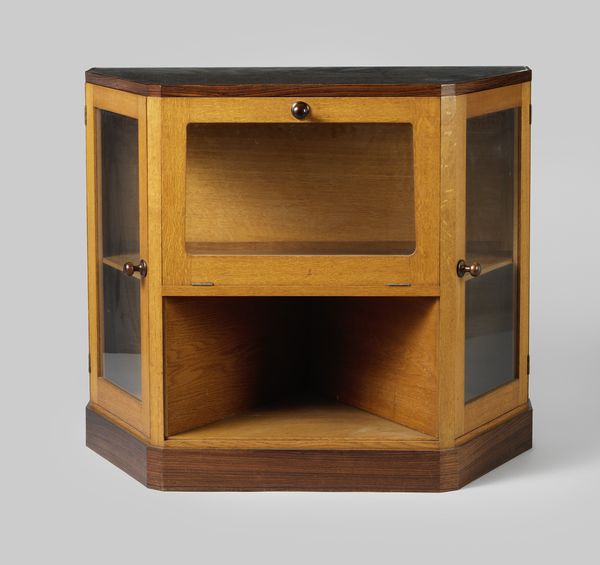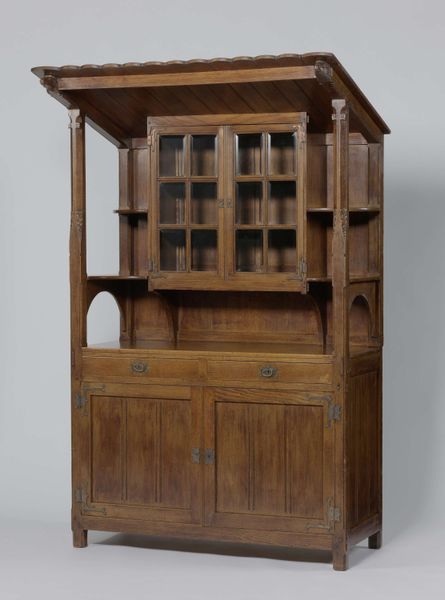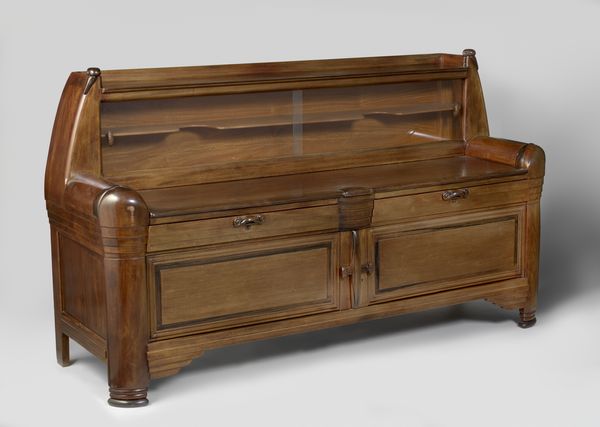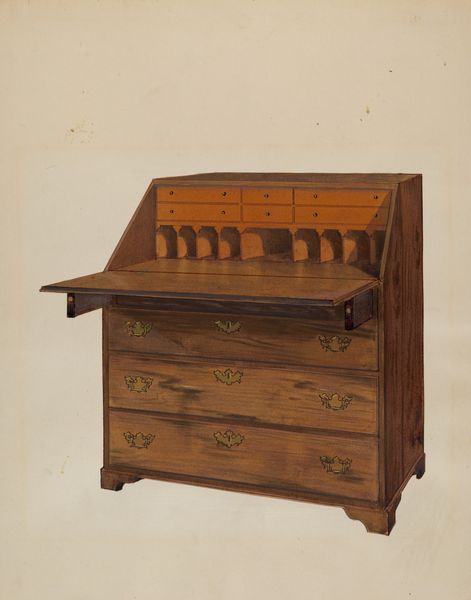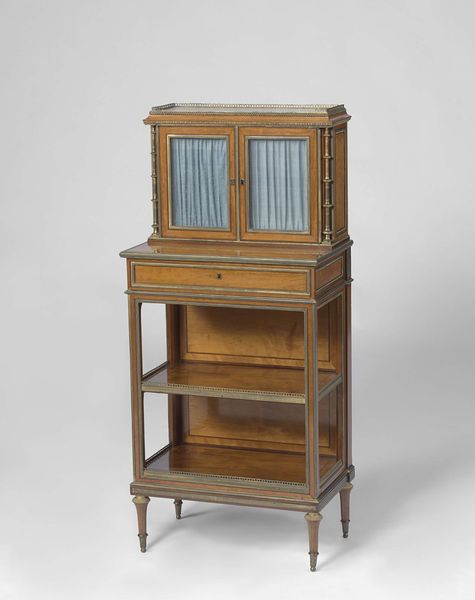
wood, architecture
#
arts-&-crafts-movement
#
wood
#
decorative-art
#
architecture
Dimensions: height 123.5 cm, width 117 cm, depth 49 cm, weight 68.8 kg
Copyright: Rijks Museum: Open Domain
Editor: Here we have a "Vitrinekast met een naar achter staande klep", or display cabinet with a drop-down lid, created by Theo Nieuwenhuis around 1910-1920. It's primarily made of wood. The cabinet has an almost stern formality, softened somewhat by the intricate floral carvings. What strikes you most about it? Curator: It's interesting to consider this piece within the Arts and Crafts movement. Think about its ethos, a reaction against industrialization. Nieuwenhuis, through this cabinet, seems to be making a statement about the value of handcrafted objects and the role of the artisan in a rapidly changing society. What do you think the choice of wood signifies in that context? Editor: Well, wood is a natural material, so it feels like a deliberate rejection of mass-produced, synthetic materials. It’s almost like saying that true value comes from nature and human skill. Curator: Precisely. And look closer at the carvings. Are they merely decorative, or do they suggest something deeper? Consider the time it would take to create such detailed work. Isn't that a commentary on the slower pace of life, a pre-industrial rhythm that the Arts and Crafts movement sought to reclaim? It is also meant to spark dialogs about social reform through design. What message is embedded in that slower pace? Editor: Maybe it’s about resisting the pressure to constantly produce and consume. The care taken in crafting this cabinet becomes an argument for quality over quantity. I also wonder how accessible such a cabinet would have been, and to whom it spoke. Curator: Excellent point. Who gets to own, appreciate, and preserve these expressions of "quality"? Does the beauty inherent to a work justify that inaccessibility, or is there a tension between its message of craftsmanship and the potential exclusivity it implies? It reveals societal and cultural stratifications of value. Food for thought, isn't it? Editor: Definitely gives me a lot to consider. I see now how it connects so many social and political conversations from then until now.
Comments
No comments
Be the first to comment and join the conversation on the ultimate creative platform.
